Barranquilla’s Rise and Fall is actually pretty interesting. In just two centuries – roughly six generations – this great city saw huge success, building itself out as the premiere city in all of South America. It was a city of firsts on the continent and a place where everyone wanted to be. And then in the last sixty years all that was lost. Thanks primarily to political corruption and bad decision, the city lost its footing and fell all the way down. Now, so many years later, local government, community, and business leaders are working hard to rebuild what once was – and they’re doing an amazing job.
In this article I’ve attempted to showcase Barranquilla’s rise and fall succinctly; with just enough detail to be interesting. I’ve shown how ‘La Arenosa’ (the sandy place) transformed itself from a series of small outcroppings into a bustling port, a cultural melting pot, and a symbol of resilience. Whether you’re into history, culture, or just curious about this cool city, this should give you a much better understanding of why Barranquilla is such a unique and exciting spot.
Located on Colombia’s northern coast, Barranquilla is a hot and lively city, bursting with history, culture, and Caribbean flair. Famous for Shakira, Sofia Vergara and Carnival, a four-day fiesta of music and characters and fun and parades and binge-drinking.. this city is the heart of Colombia’s Caribbean spirit, offering an awesome mix of historical depth, diverse cultures, and a super friendly vibe.
Barranquilla’s Rise and Fall – Part 1 Pre-Colonial Times
For hundreds of years before the Spanish landed, the region was home to many different indigenous peoples. Tribes such as the Mokaná, Piojó, and Malambo centered their lives on farming. They grew crops like corn and yucca, and used the Magdalena River for fishing and getting around.
The indigenous tribes lived in small, semi-nomadic groups. They traded with each other near and far, swapping things like pottery and textiles. They shared a strong spiritual connection to the land, worshiping nature gods and spirits. Barranquilla’s population now is mestizo, blending Spanish with African influences. Indigenous roots are also an essential part of this cultural tapestry. Many efforts have been made to revive and promote their culture, language, and traditions.
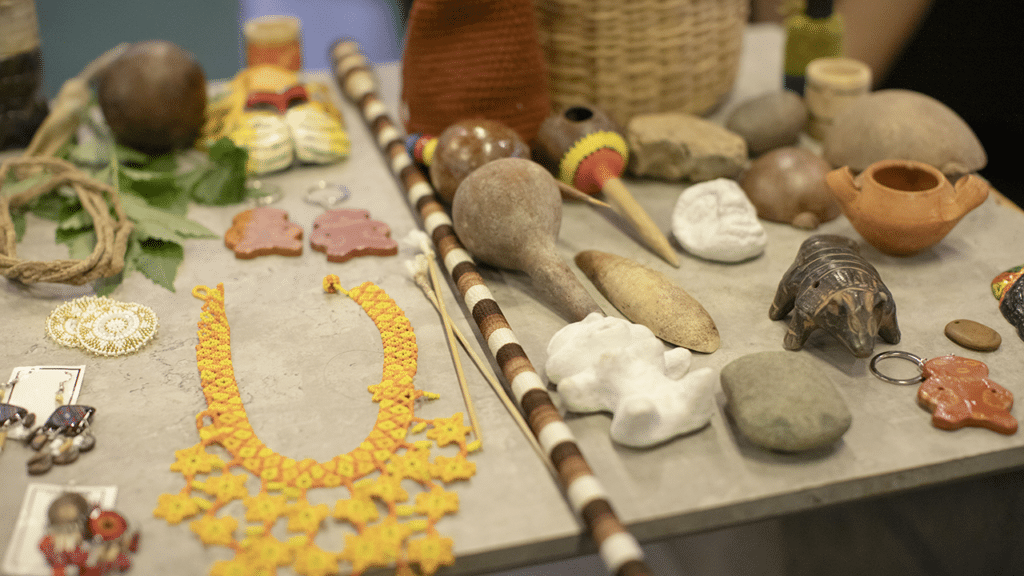
Spanish Colonization
When the Spanish Conquistador Alonso de Ojeda’s crew arrived on the northern coast of South America in 1499, life for the local tribes took a serious downturn. The spot they landed at was El Cabo de La Vega, just north of present-day Riohacha en La Guajira. (side note – this area is beautiful – definitely worth a visit.) The Spanish were after gold and wanted to grow their empire, so they began setting up towns along the coast. Colonizing wasn’t quick or easy, and it was often brutal. Native peoples were forced into hard labor and made to convert to Christianity. On top of that, diseases like smallpox and influenza, brought by the Spanish, wiped out millions.
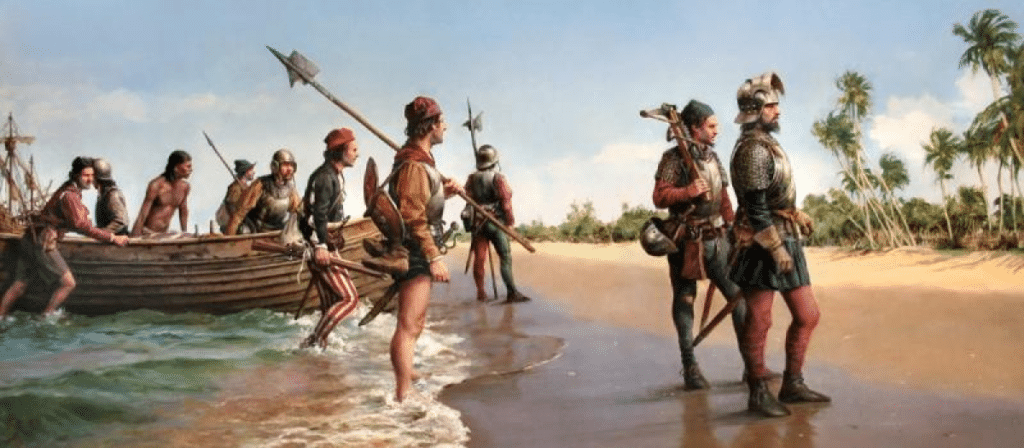
Towns near Barranquilla founded by the Spanish:
1. Santa Marta (1525): Founded by Rodrigo de Bastidas, Santa Marta is the oldest surviving city in Colombia. It is also one of the first Spanish settlements on the South American continent. It served as an important base for further exploration and colonization of the interior.
2. Cartagena de Indias (1533): Cartagena was founded by conquistador Pedro de Heredia. It quickly became one of the most important ports in the Spanish Empire. Its strategic location and natural harbor made it a key center for trade. Chief among them was the export of gold and silver, and later, the importation of enslaved Africans.
3. Mompox (1537): Officially named Santa Cruz de Mompox, this town was founded along the Magdalena River. It became a key inland trading post. Mompox was crucial for transporting goods between the coast and the interior of Colombia.
Foundation
While Bogota, Santa Marta, and many other cities were founded by royal Spanish decree, Barranquilla came about organically as a collection of rancherías. These were small rural settlements that popped up along the Magdalena River and its tributary streams. Key rancherías like San Nicolás de Tolentino, San José de Galapa, Cumbalá, and Camacho became known for their rich, arable land. Also, their easy access to the waterways made them great locations for trading crops and livestock. The early region of Barranquilla evolved from these rancherías as a small but busy community. Initially, the focus was on farming, fishing, and river trade.
Enter the 19th century (the 1800s) and people began to realize just how important Barranquilla was to the nation’s success. In the first decade, during the fight for independence from Spain, Barranquilla was a key hub for revolutionary forces. It proved essential for getting supplies, equipment, and even troops to the front lines. The Battle of Boyacá, the turning point in the fight for freedom from Spanish rule, couldn’t have been won without the key logistics contribution of the city of Barranquilla.
—
Barranquilla’s Rise and Fall – Part 2 Freedom to Grow
Once Colombia gained its independence, Barranquilla grew fast. Based at the mouth of the Magdalena where it enters the Caribbean Sea, the city became a major port for goods and people. Booming with opportunities to make money, the region attracted lots of immigrants from Europe, the Middle East, and the Americas. Many came from areas that are now Lebanon, Syria, and Palestine. They escaped tough times, unstable governments, and religious conflicts back home. These people saw a bright future in Barranquilla, especially in areas like textiles, trade, and retail. They took advantage of the country’s open immigration policies and started new, prosperous lives.
These newcomers brought fresh ideas and traditions that helped shape the city’s diverse vibe. Many have now become major power brokers in the area. Take for example Alex Char and his family – owners of the Junior Football Club, radio stations, and several supermarkets. The Gerlein’s are another powerful and influential family in Barranquilla, particularly in politics and construction. Another is the Nassar family, known for their influence in journalism and television. Yet another is the Daes family which has been extremely successful in the industrial sector, particularly in manufacturing and construction. In fact, Tecnoglass (owned by the Daes family) recently donated a number of gorgeous monuments to the city. The Ventana al Mundo (Window to the World), highlights the city’s future prospects. La Ventana de Suenas (Window of Dreams) represents the immigrant contribution. Finally, the Ventana del Campeones (Window of Champions) is dedicated to the local football team.
Maritime Expansion
As Barranquilla grew, so did its infrastructure. In 1822 the Intendencia Fluvial (Waterway Management) was established to control the local waterways. You can visit the museum at Plaza de Intendencia Fluvial, just around the corner from Plaza de la Aduana. New roads, bridges, and public buildings started popping up. The arrival of steamships in 1851 boosted its role as a key port, easing trade with Europe and North America. In 1887 the city further expanded its maritime capacity with the construction of the original muelle (pier) in Puerto Colombia. This era also saw the first public schools, hospitals, and cultural institutions, marking Barranquilla’s start as a modern city.
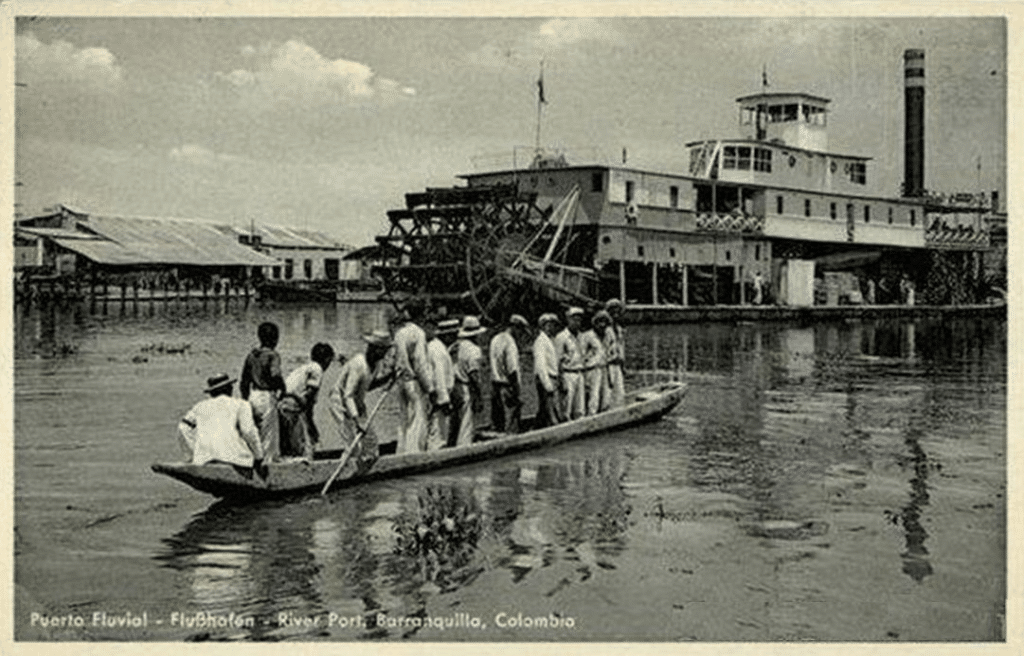
In no time at all, Barranquilla had become a key gateway to Colombia and the world beyond. Traders, businessmen, craftsmen, and workers came from all over. The city began to take shape with the construction of churches, markets, and homes. You can still see the influence of Spanish colonial architecture in some of Barranquilla’s oldest neighborhoods. Barrio Abajo and Centro are good examples where the narrow streets and old-style buildings give you a glimpse into the past.
Some Landmarks Constructed in the 1800s:
1. La Catedral Metropolitana María Reina de Barranquilla (Metropolitan Queen Mary Cathedral of Barranquilla):
This stunning cathedral began construction in 1887 and was finished in 1915. It’s a major landmark in Barranquilla, mixing styles like neoclassical and renaissance. It’s a key spot for both its religious and historical significance. The cathedral is across from Plaza de La Paz and just around the corner from Portal de Prado Mall.
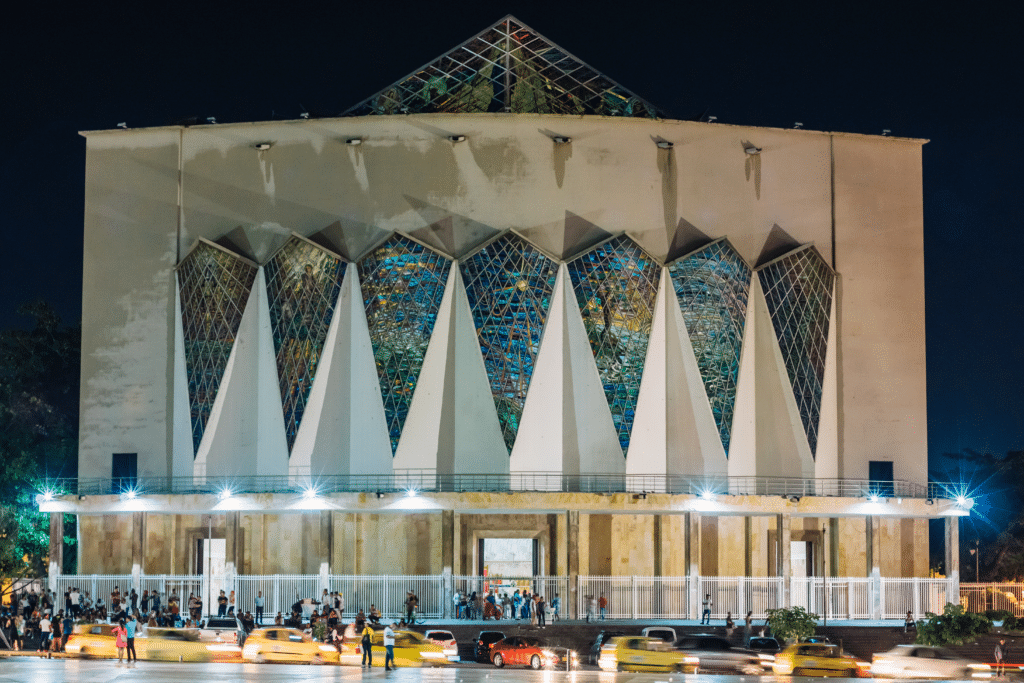
2. El Edificio de la Aduana (Customs Building):
Built in the late 1800s, this building was crucial for trade as Barranquilla’s port became more important. It’s a cool example of the colonial-style architecture from that time. It saw dual use both as stables for horses as well as a carriage house and customs yard for the train that ran products up from the port. (You can see one of the original locomotives on-site at Plaza Aduana!). These days Edificio de la Aduana houses a library, a museum, and the headquarters of the Barranquilla Chamber of Commerce.

3. Estacion Montoya:
This historic building is part of the aforementioned Aduana complex. Built in 1871 it was the original station on the Barranquilla tram line. Nowadays it houses the executive offices of the Chamber of Commerce.

4. Plaza de la Intendencia Fluvial
This historic building served as the administrative center for river transportation in the region. Constructed in 1936, it played a crucial role in managing and regulating the Magdalena River, which was essential for trade and transportation.

—
Barranquilla’s Rise and Fall – Part 3 The Barranquilla Boom
The late nineteenth and early twentieth centuries saw epic change and advancement. The city was buzzing with excitement and development. Several things kicked off this boom, like the expansion of the port and new infrastructure projects. One such project solved a major problem; the inability of large ships to enter the Magdalena due to shifting sandbars. The solution was a railway system that bypassed the river delta altogether, bringing cargo from the river port in Barranquilla out to the ocean ships at Salgar and vice-versa. Later, the line extended to the Muelle at Puerto Colombia. With new efficient transport for goods and people, factories and service companies instantly popped up. They produced textiles, food, and other goods for both local use and export. The introduction of the railway was a major development for Barranquilla and the surrounding areas.

Around this time, American engineer and entrepreneur Karl Parrish made his entrance on the scene. Karl played a significant role in the development and modernization of both the port facilities and the railway. He was also responsible for architectural character of the Prado neighborhood, intended as a residential option for the affluent. Known for its well-planned streets and attractive residential buildings, Prado is a neighborhood unto its own. If you haven’t yet walked through El Prado, definitely check it out – it’s magical.

In 1921, Barranquilla earned the nickname “Golden Gate of Colombia” because of its importance as a major entry point and its role as a center of innovation. The city’s cultural scene also took off, with new theaters, libraries, and museums, and a lively arts scene. During these years, Barranquilla played host to a number of impressive firsts.
Here are a couple of key milestones:
- First airport in South America was Barranquilla’s Ernesto Cortissoz International Airport. It opened its doors in 1919 and quickly became Avianca’s first hub in the region. It remains in operation to this day handling all of the city’s air traffic.
- First electric streetcar in Colombia launched in Barranquilla in 1908.
- First airplane in Colombia, a Curtiss NC-4, landed in Barranquilla on March 12, 1919.
- First radio broadcast in Colombia, on “Radio Barranquilla”, aired August 15, 1929.
- First hotel in Colombia – The Gran Hotel opened in December, 1930, one of the most opulent and luxurious facilities in the Americas.
- First hotel in South America with private bathrooms and telephones – Hotel El Prado, which has the current distinction of being the oldest hotel in Colombia still in operation.
(Note – check out this article on Hotel El Prado – it’s my favorite hotel in the region and a true masterpiece with major historical cred.)

These achievements reflect Barranquilla’s role as a trailblazer in various fields, from aviation and education to culture and industry. By the 1940s, Barranquilla had become a huge deal—it was the second-largest city in Colombia and one of the most modern cities in the Caribbean and South America.
—
Barranquilla’s Rise and Fall – Part 4 Struggle
Over the next fifty years, thanks mainly to widespread corruption in local government, things began to slide. Barranquilla, like many other cities in Colombia, fell on hard times. The city’s leaders were not managing things well, and as the federal government started investing more in other cities, Barranquilla’s star began to fade, and its national importance dropped.
It was also around this time that government dismantled the region’s railways. This came about in part due to a strong trucking industry pushing a move to roads, but also was directly impacted by corruption. For years, local leaders had embezzled funds earmarked for railroad maintenance and the tracks had fallen intro disrepair.
The port, which had been so influential to the city’s growth and had driven so much prosperity for the business and industrial sectors, also fell into major disrepair while the nearby coastal cities of Cartagena and Buenaventura spent heavily on modernizing their shipping infrastructure. Like the rail system, funds intended to improve the port facilities were instead directed into personal accounts of corrupt politicians. Unable to compete, Barranquilla lost the maritime traffic and factories were forced to close or downsize. Jobs were lost, and the local economy took a major hit.
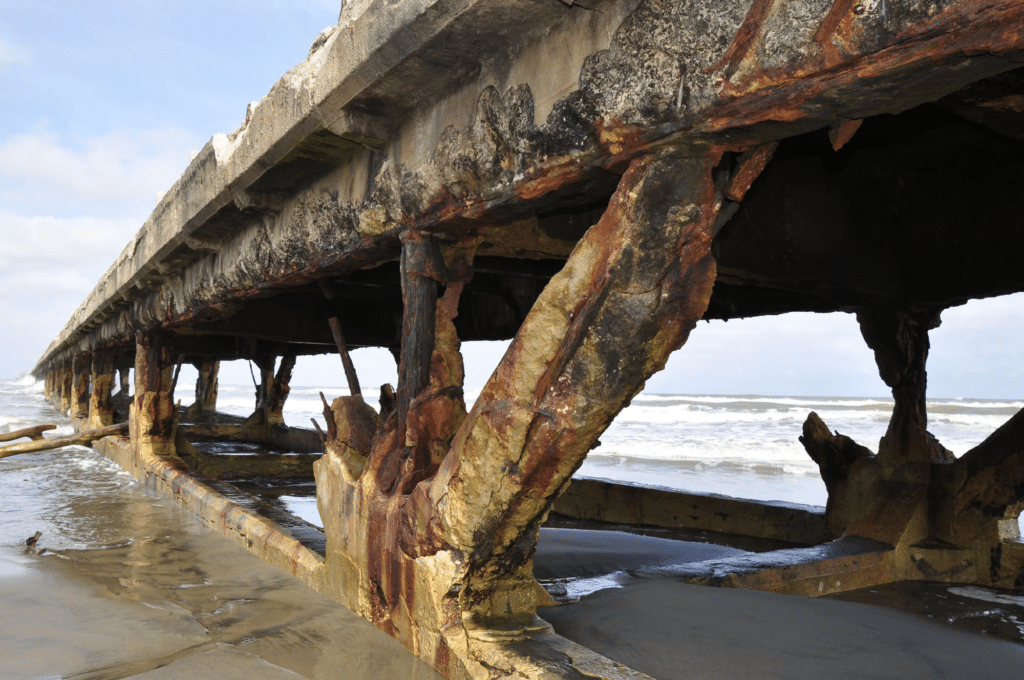
Social Pressures
Along with the economic downturn at the end of the 20th century, Barranquilla faced tough times with social issues. The city struggled with poverty and inequality, and even to this day there are parts of Barranquilla where life is difficult and resources are scarce. In the final decade of 1900s, Barranquilla was suffering extremely high unemployment, with as much as half the population living below the poverty line and with limited to no access to basic services. Healthcare was highly fragmented and many residents, especially in the poorer neighborhoods, experienced huge disparities in access and quality. Education was another major challenge with under-funding and limited access to resources and trained teachers. Illiteracy across the country was 12% – with impoverished areas in Barranquilla hitting as high as 30%.

—
Barranquilla’s Rise and Fall – Part 5 Recovery
Fast forward to present day and the city is fighting back with impressive resilience. In just the last 15 years, local government has really come together with local leaders to tackle social and economic challenges. Community groups, the chamber of commerce, entrepreneurs, and resident groups are working to improve education, health services, and living conditions, especially in the areas that need it most.
- The poverty rate has dropped from 50% to under 30%, still a challenge obviously – but with good forward momentum. Unemployment has plummeted from 40% in the 90s to 15% in 2003 to just 9% in 2023.
- 90% of residents now have access to good quality healthcare and infant mortality is down 60%. Enrollment in secondary education has grown by 50% and the crime rate is down 35%.
Barranquilla has also undergone several major infrastructure changes that have transformed the city’s landscape and improved the quality of life for its residents.
Here are some of the more notable efforts:
Channeling the Arroyos:
The rivers of water that would wash through the streets with each rain, carrying unlucky people and vehicles out to the sea are a thing of the past. As early as a decade ago, when I moved here, the city would literally stop with each rain – traffic would halt and people would huddle under awnings waiting waiting for it to stop. Those days are largely gone – the region has invested billions in a massive project to move the majority of these arroyos underground.
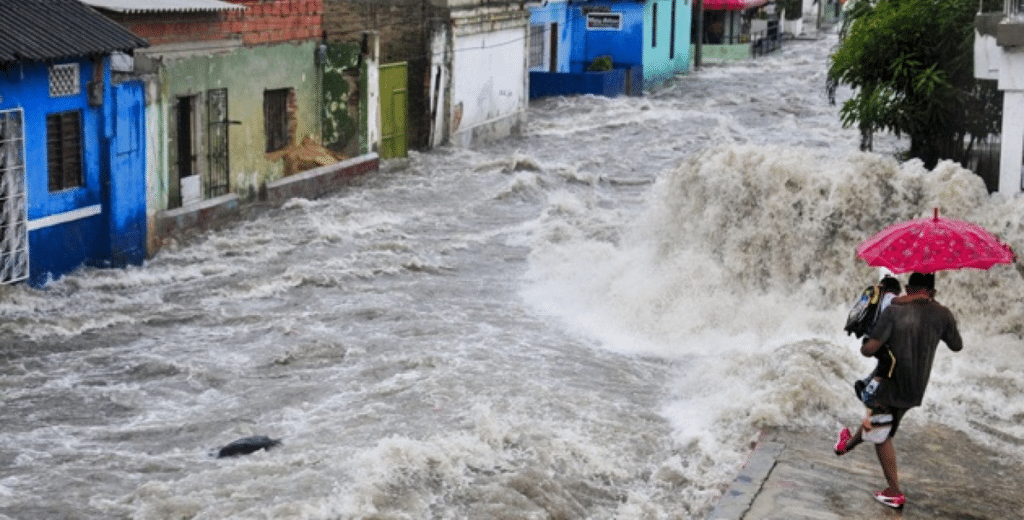
Gran Malecón
The “Great Boardwalk” along the Magdalena River is one of the most significant projects the city has undertaken, converting roughly 5 kilometers of industrial zone into a vibrant public space that includes parks, restaurants, and cultural areas. This development has revitalized the city’s connection to the river and become a popular destination for both locals and tourists.

Ciénaga de Mallorquín Ecopark:
Residence for over 150 local and migratory birds, this new park features stilt walkways that help connect families with green spaces and nature.

Malecón del Mar and Muelle 1888:
This whole new space in Puerto Colombia, just north of the city, adds a beautiful beach paradise to the region, buffered from the Caribbean Sea by a 2.5-hectare Mangrove area. For hungry stomachs, the Sazón Market and the International Gastronomic Center both open a world of food opportunities. According to Atlantico governor Elsa Noguera, “This center pays tribute to immigrants, and visitors can enjoy the best Arab, Chinese, Spanish, Italian, or German cuisine. It will also be a beautiful public space for seaside dining.”

Puerto Mocho Beach:
Converted from a dirty fishing village, Puerto Mocho is now a calm and clean ocean-side beach, with a sports area exclusively for swimmers, surfers, kite surfers, and paddle boarders and even a train to bring people from Las Flores down to the waterline.

—
Barranquilla’s Rise and Fall – Part 6 Moving Forward
For me, one of the coolest things about Barranquilla’s recovery is the city’s resilience and how it has held onto its cultural identity. Despite all the economic and social pressures, people remain positive and upbeat. Music and dance are integral to life on the coast, and no matter where you go or what time of day it is, you’re bound to hear people celebrating something – it’s quite literally inspiring.
On the whole, Barranquilla has faced many challenges but has come out stronger and more dynamic than ever. The city has managed to adapt to economic changes, tackle social issues, and embrace modernization while keeping its cultural spirit alive.
The stage is set for what’s to come.

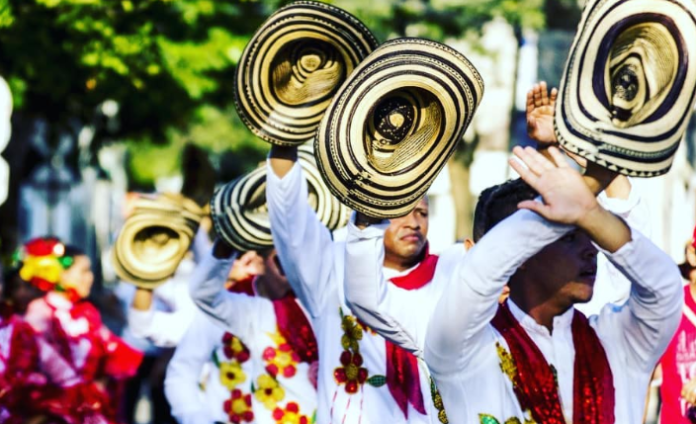
Nice read Mike. Such a fantastic city of culture. One of my favourite places in the world and full of special people. Happy memories flashing back.
Thanks Scott! It’s time to come for a visit – though perhaps best to wait for oven to cool down. 🙂
Mike, just read part of your excellent article on Barranquilla , you cover it really well , it makes me want to book my flight . Great story i hope to spend at least one night in the Hotel Prado.
thanks
Dave Hampton .
Toronto. Hot like Barranqilla this week .
Thanks David – check out my article on Hotel El Prado if you haven’t yet – it’s a fascinating hotel rich with history and culture.. and it’s a great place to stay as well. They have one of the nicest pools in the city and by far the best breakfast.
Mike ive been reading reviews about Hotel el Prado and its getting mixed reviews like not much choice for breakfast, only a 3star hotel , unfriendly staff , your thoughts please. Dave Hampton.
Really nice article overall. I hate to mention a few inaccuracies in the key milestones section. Hope it’s not a problem!
– The first airport wasn’t the current int’l airport, but rather Veranillo Airport (where the Naval Base in BAQ is). This is the one that opened in 1919 and where Avianca (then SCADTA) opened its first hub, before moving to Soledad, then finally the current location of the int’l airport.
– The first electric streetcar wasn’t launched in BAQ in 1908, but there was an attempt in 1906 that failed. Info is at the Tramz site (main reference site for tram/rail history).
– According to the Colombian Air Force, the first airplane in Colombia was in 1911, just outside Bogotá, though it failed to take off. It seems the first actual flight was in Medellín in 1913.
– First radio broadcast in Colombia was in Bogotá on HJN, but the first commercial broadcast was on the radio station La Voz de Barranquilla (a few months later, in 1929).
– First hotel in Colombia wasn’t BAQ’s The Gran Hotel in 1930. The first was Hotel America in Honda, in 1889, according to a paper by the Geographic Society of Colombia.